Blue Jays: Top 10 Playoff Push Trades

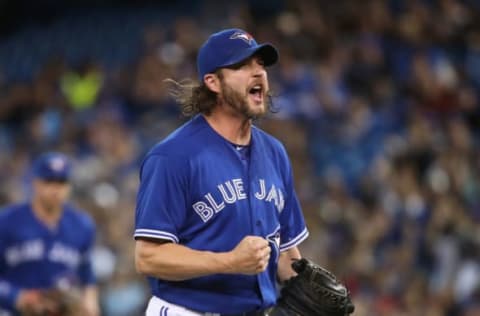
Throughout the Toronto Blue Jays years, the franchise has made the playoffs seven times. Whenever you are gearing up for the playoffs you are always looking to fill holes or strengthen your roster in different areas. In this piece, I look at what I consider to be the top ten mid-season trades the Blue Jays made to help them go deep into the fall.
When looking back at the history of the Blue Jays they did well for not just picking up rentals but were able to get players with control. They were able to use those players for future years which led to further playoff appearances. For the purpose of this article, I will be looking strictly at the season they acquired the player.
Before getting into the list of top 10 players they picked up, I wanted to acknowledge a few players on the honorable mention list, these players include:
Al Oliver was picked up for the 1985 run and platoon in the designated hitter position. He went 3 for 8 in the ALCS against the Kansas City Royals.
Candy Maldonado was acquired for the 1991 run and fit in very well in left field and was a lot more productive for the 1992 run.
Mark Lowe joined the 2015 run and pitched in six games that postseason.
Jason Grilli hopped on the 2016 team that made it back to the playoffs. He pitched in the Wild Card Game, as well as both the ALDS and ALCS without allowing a run over 3.2 IP.
With those players acknowledged, here is a look at the Top 10.
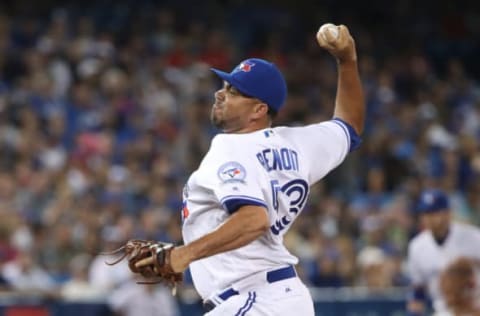
A Swap of Struggling Relievers
10. Joaquin Benoit for Drew Storen
You can never stop acquiring high-end bullpen pitching and that was what GM Ross Atkins did as he geared the Blue Jays up for the 2016 playoffs. One great term I’ve heard one general manager say is “Fail Fast” and that is what Atkins did with Drew Storen. Atkins acquired Storen in the offseason leading into 2016 for high energy player and fan favorite Ben Revere. After 38 appearances and a 6.21 ERA, Atkins moved on from Storen and acquired Joaquin Benoit in exchange.
Benoit had a long history of being a really good bullpen pitcher, however, he was struggling in his first season in Seattle, as he had a 5.18 ERA in 26 games so the trade could be a change of scenery for both players. Benoit made 25 appearances for the Blue Jays and allowed one, yes you read that right, one run over 23.2 IP. It wasn’t until his 19th appearance with the Blue Jays before he allowed his first run which came off of a David Ortiz solo homerun.
In his time with Toronto, Benoit picked up two wins, one save and 10 holds. His superb pitching came to a crashing end on September 26, just over a week before playoffs. During a bench-clearing incident against the New York Yankees, Benoit sustained a tear to his calf muscle and would end up missing the remainder of the season.
You have to wonder what the bullpen situation would have been like with Benoit in it. However, even without pitching in the playoffs, it is no doubt that Benoit was a huge acquisition for the Blue Jays to get them to the postseason. Benoit would play in the 2017 season between Philadelphia and Pittsburgh but couldn’t bring back his days in Toronto and no longer plays.
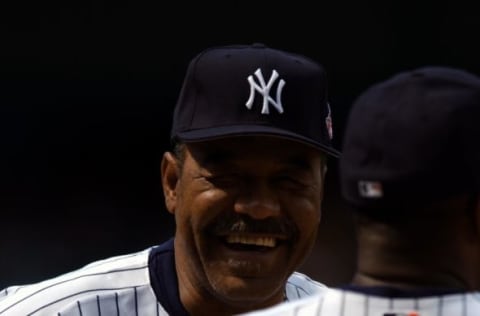
Solidifying the Designated Hitter Role
9. Cliff Johnson for Prospects Matt Williams, Jeff Mays and Greg Ferlenda
In late August 1985, the Toronto Blue Jays were pushing towards their first-ever postseason. One position the team lacked was a bona fide designated hitter on the team as Jeff Burroughs had seen the most time in that spot and he wasn’t producing to what a playoff team needed. The Blue Jays acquired Cliff Johnson from the Texas Rangers for three prospects who combined to play in six total major league games after the trade.
The club was familiar with Johnson as he had played the previous two seasons in Toronto before departing for Texas in free agency after the 1984 season. Johnson was having a productive season in Texas as he had 17 doubles, 12 home runs and was batting .257 over 82 games. When he came to Toronto he would platoon at DH with Al Oliver; who they had also just acquired in early July.
While the power numbers went drastically down after the trade as he hit just one extra-base hit (a home run), he still batting .274 over 24 games and it was the playoffs where he really produced. Johnson played in all seven games, starting in four of them in the ALCS series the team would ultimately lose.
Johnson and Oliver played the platoon role very well together, as Johnson would go 7 for 19 (.368) with two doubles and two RBI over the series. He would come back and play the 1986 season with the Blue Jays before retiring.
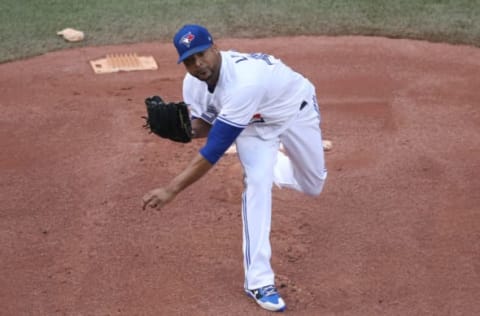
A Pitcher and Two Prospects
8. Francisco Liriano, Reese McGuire and Harold Ramirez for Drew Hutchison
If you want to look at one of the best trades in franchise history, I think this trade would go down as one of the top. On the surface, it looked like Drew Hutchison was a solid pitcher as he was coming off a 13-win season in 2015, however it was more to do with offensive support as he had an ERA of 5.57. In 2016, John Gibbons did not have confidence in Hutchison on the mound and he needed another pitcher.
The Pittsburgh Pirates were looking at shedding Francisco Liriano’s nearly $27 million dollar contract and all it cost them was prospect Reese McGuire and Harold Ramirez for struggling Hutchison.
We won’t get into what happened to Hutchison and how he has fizzled out, or what the future looks like with McGuire. The Blue Jays were looking for some insurance in the starting rotation which turned out to be Liriano. Liriano would end up starting eight games and coming in relief twice during the regular season. In his eight starts, he averaged 6IP and a 2.66 ERA.
Liriano came up huge in the Wild Card game that offseason against the Baltimore Orioles. With the game tied in the tenth inning, Liriano was brought in with one out and got the next five batters out which led to Edwin Encarnacion’s historic walk-off home run. Liriano was the pitcher of record that night picking up the win.
Liriano would be traded the next season for Teoscar Hernandez and Nori Aoki.
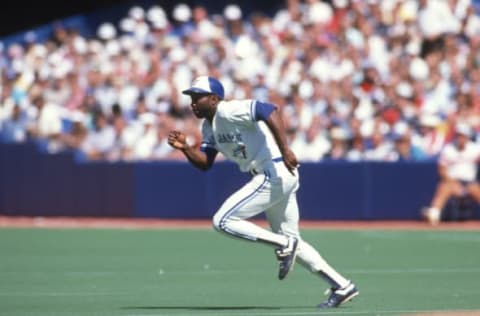
Moooooookie!
7. Mookie Wilson for Jeff Musselman and Mike Brady
During the 1989 season, the Blue Jays were running an outfield of George Bell, Lloyd Moseby, and Junior Felix after trading Jesse Barfield in April for starting pitcher Al Leiter. While the outfield was sufficient enough, the problem was rookie manager Cito Gaston could not find a fourth outfielder that he felt comfortable with.
On July 31, general manager Pat Gillick traded Jeff Musselman who was a solid pitcher but fighting off injuries along with prospect Mike Brady for speedster Mookie Wilson. Wilson immediately became a fan favorite with encouragements from the crowd yelling “Moooooooooookie”.
What Wilson allowed Gaston to do was go with a four-man outfield. Wilson would play evenly through all three outfield positions down the stretch as he started 21 games in center, 16 games in right and 12 games in left. Wilson showed his versatility in the field as he could play all three positions and made just one error.
At the plate, Wilson would never be mistaken for a power hitter but was still able to hit 12 extra-base hits over 54 games where he batted .298 and went 12 for 13 stealing bases. In the ALCS against the Oakland Athletics, Wilson started the first two games in right field moving Felix to the bench. However, after DH Lee Mazzilli went 0 for 7 in the first two games, Gaston elected to move Wilson to left field and Bell to DH for the remainder of the series.
Toronto lost the series in five games but Wilson went 5 for 19 (.263) with two RBI and a stolen base. Wilson would play two more years, including one more playoff season in Toronto before retiring.
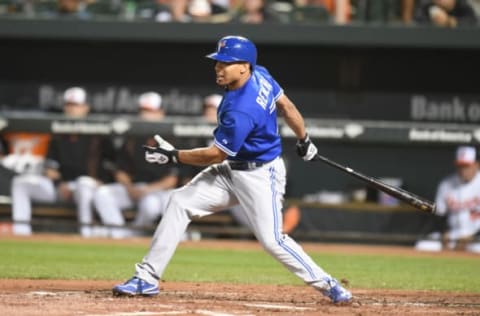
Establish the Lead Off Position
6. Ben Revere for Alberto Tirado and Jimmy Cordero
After the Blue Jays won the World Series in 1993 it would be 22 years before the franchise would see themselves in the playoffs again. When it came too late July and the non-wavier trade deadline approaching, the Toronto Blue Jays were six games behind the top spot in the AL East. GM Alex Anthopoulos felt his team was underachieving so he was making some big moves and during these trades, he moved the teams’ lead-off hitter Jose Reyes. This trade left a huge hole at the top of the order and manager John Gibbons was forced to put Troy Tulowitzki leading off games on his arrival to Toronto.
Anthopoulos acquired Ben Revere from the Philadelphia Phillies for a couple of prospects in Alberto Tirado and Jimmy Cordero. It took almost a month into his arrival before John Gibbons would put Revere into the permanent lead-off position as he continued putting Tulowitzki in that spot. However, Revere was a prototypical lead-off man, he could get on base and he had a lot of speed, so it was just a matter of time before he found himself there.
Coming from the Phillies he had a .303 average and 95 stolen bases over two and a half seasons. He fit in immediately with the Blue Jays and fans loved him, especially after he challenged fans to play a game of NHL on Play Station 4 against him during a post-game interview.
Revere finished the regular season for the Blue Jays in the lead-off position where he batted .319 with 11 extra-base hits and 7 stolen bases. When it came to the ALDS, Revere was a bit part of the win as he was tied for the series lead in hits with seven ( 7 for 23, .304) without striking out in any game.
Revere did struggle at the plate in the ALCS as he struck out seven times over six games and batted just .208, however it was his catch in game 6 of the series that will be most remembered. With the Blue Jays down 2-1 in the seventh inning and Mike Moustakas at first base, Salvador Perez hit what looked like extra bases to the left-field wall.
Did you see that catch? Blue Jays OF Ben Revere made an awesome leaping grab in ALCS Game 6: https://t.co/V4KK4SGICl pic.twitter.com/ANlJRhPppL
— USA TODAY Sports (@usatodaysports) October 24, 2015
Revere leaped up going against the wall and made a remarkable catch to save extra bases. Moustakas would come around to score later in the inning and the Blue Jays wound up losing the game and series, but it would have been a lot worse was it not been for Revere.
Ben Revere would be traded that offseason for Drew Storen, but this article isn’t about bad trades so we won’t get into that.
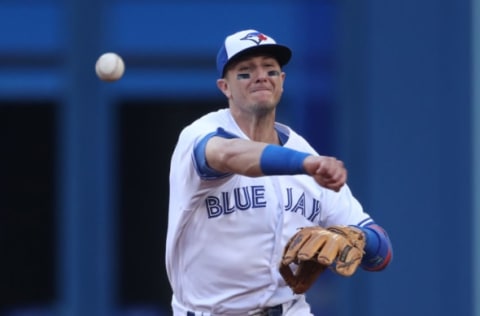
Power Bat at Shortstop
5. Troy Tulowitzki and LaTroy Hawkins for Jose Reyes, Miguel Castro, Jeff Hoffman, and Jesus Tinoco
This trade is an interesting one to break down as Troy Tulowitzki was not dominating at the plate but was sure-handed on the field and LaTroy Hawkins was lights out from the bullpen during the regular season but couldn’t get outs in the playoffs.
We’ll first look at why the trade needed to happen. The Blue Jays had Jose Reyes at shortstop and he was a carefree, type of guy who loved everything about baseball. The problem was that he became almost too lackadaisical on the field. Reyes was in the midst of the worst defensive season of his career while allowing routine balls to dribble through his feet. From all accounts, it appeared he was a great teammate and a lot of players weren’t happy with the team moving Reyes out.
Troy Tulowitzki brought a no-nonsense type attitude to the ball team. He was one of the top shortstops in baseball over the last decade when he could stay healthy. Tulowitzki made an immediate impact and had a first game to remember when he went 3 for 5 with two doubles and a home run. The veteran shortstop started to struggle down the stretch at the plate which was capped off when he collided with Kevin Pillar on a pop fly that cracked his shoulder blade. The injury kept him out of the line-up for almost three weeks leading into the playoffs.
The playoffs that year were two drastically different series for Tulowitzki. In the ALDS he had just two hits in 21 at-bats and struck out seven times. In the ALCS he turned things around as he led all Blue Jays with seven hits and seven RBI while batting .304. Tulowitzki would be a main part of the Blue Jays playoff push the following season as well and batted .462 in the ALDS.
Troy Tulowitzki sets club record for most RBI in a single ALCS with 7
— Toronto Blue Jays (@BlueJays) October 22, 2015
Hawkins was a veteran arm out of the bullpen that was going to retire at the end of the season. He was absolutely dominant out of the pen for the first month as he allowed just one earned run over 11.1 IP in 12 appearances. However, once the calendar turned to September he struggled allowing four earned runs in just five innings pitched. In the playoffs, he had three appearances for 1.2 IP and allowed 7 runs.
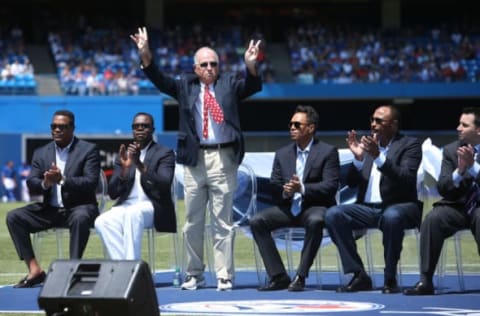
Familiar Arm for the Bullpen
4. Jim Acker for Tony Castillo and Francisco Cabrera
During the 1989 season, the Blue Jays starting rotation was tops in the league and their bullpen was lights out, but they had one hole. General Manager Pat Gillick wanted to fill one more spot in the bullpen for a run at their second postseason. Rookie Tony Castillo was struggling in his role so Gillick went out and acquired a familiar face and on August 24 brought in Jim Acker. Acker had spent three and a half seasons with Toronto from 1983-1986, which including pitching six shutout innings in the 1985 ALCS.
Acker was in the midst of his best season in Atlanta posting a 2.67 ER and 1.07 WHIP over almost 100 innings. He got even better down the stretch in Toronto as he was used 14 times in just over a month down the stretch, including arguably his best performance of the season on September 29. With the Blue Jays up one game on the Baltimore Orioles for the AL East Pennant and playing them in the final series of the regular season.
The team called upon Acker in the sixth inning with the team down 1-0. Acker threw four shutout innings, allowing the team to tie it in the eighth and eventually win it in the eleventh inning. The win by the Blue Jays was the difference of them being up two games or being tied in the standings with two games in the season to go. Toronto would split the next two games and win the AL East Pennant.
In the ALCS, Cito Gaston relied heavily on Acker as he used him in all five games of the series. Acker would throw a combined 6.1 innings in the series allowing just one earned run for a 1.42 ERA and 0.79 WHIP. Acker would play the next two seasons with Toronto and made an appearance in the ALCS Championship in 1991. Acker wound up playing in three different League Championship Series for Toronto, pitching in eight games and finished with a 0.69 ERA and 0.62 WHIP.

Cy Young Caliber
3. David Price for Matt Boyd, Daniel Norris and Jairo Labourt
On July 30, 2015, the Blue Jays were a whopping six games behind the AL East lead, yet GM Alex Anthopoulos knew his team was underachieving and wanted to add an ace to the line-up. Anthopoulos shocked Blue Jays fans and acquired one of the best arms in the game in soon to be free agent David Price. The cost was three top pitching prospects.
Price was a legit All-Star, Cy Young caliber pitcher the Blue Jays had failed to have since the departure of Roy Halladay. Price was putting up another Cy Young type season and he would get even better in Toronto. This trade is another one that is hard to evaluate as without Price the Blue Jays likely would not have won the division, however, once playoffs started he was not the same pitcher.
Price made his Blue Jays debut on August 3 which he would later leave to a standing ovation. Price struck out his first two batters and had a 1-2-3 first inning. By the end of the game, his pitching line looked like 8 IP, 3 hits, 1 run, two walks, and 11 strikeouts. This start propelled Price to a 9-1 record and 2.30 ERA over 11 starts over the remainder of the regular season.
In the first game of the ALDS, the ball would go to Price who would allow five runs over seven innings for the loss. Price would come out of relief in Game 4 with a 7-1 lead but finished his pitching line allowing another three runs over three innings.
In the ALCS, after struggling in his first appearance in Game 2 of the series, he turned things around Game 6 and gave his team a chance to win. Price pitched into the seventh inning striking out eight batters and allowing just three runs. The Jays would eventually lose that game and the series, but his performance gave them an opportunity to win.
While you wished Price could have pitched in the playoffs like he did in the regular season, you have to think without him being acquired we likely wouldn’t have all the memories of 2015.
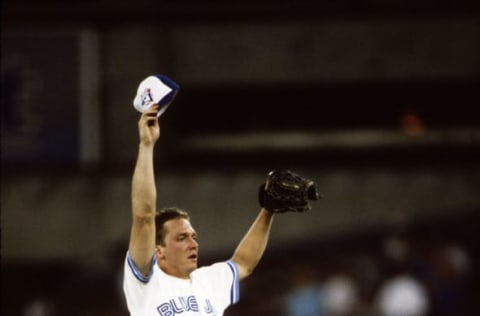
The Final Piece
2. David Cone for Jeff Kent and Ryan Thompson
In late August the Toronto Blue Jays were in first place in the AL East and looking for their third ALCS in four years. They had a rotation that was looking good but not deep as Blue Jays legend Dave Stieb was having trouble staying healthy. The team had lost three times in the ALCS in the previous seven years and needed a kick somewhere in the roster to get them over the hump and into the World Series.
On August 27, with the team up two and a half games in the division, Pat Gillick acquired front of the rotation starter David Cone from the New York Mets. The price was heavy as they had to send 24-year old high-end prospect Jeff Kent as well as Ryan Thompson. Both had lengthy careers and Kent would be a constant All-Star and won the NL MVP in 200, but you can’t put a price on a World Series ring.
Things did not look good after his first two appearances in a Blue Jays uniform as he combined to allow 12 runs in 12.2 IP in those games. However, Cone made five more starts and allowed just four runs over his next 38.1 IP striking out 34.
Cone’s first playoff performance was a masterpiece as the Blue Jays were home to the Oakland Athletics in Game 2 down 1-0 in the series. He shut down the Athletics through the first eight innings and wasn’t pulled until he allowed his first run in the top of the ninth. Tom Henke would come in and close the door to bring the series back one game apiece. Cone would get a second start in Game 5 of the series with Toronto up 3-1 in the series but wasn’t able to close it out. As we all know the Blue Jays would eventually win the series and make their first World Series appearance.
In the World Series, Cone would start two games again. He started the second game of the series where he got hit around and couldn’t get through the fifth, but the team wound up coming back to win the game. In arguably the most important game in Blue Jays history, at least to that date, Cone was given the start in Game 6 with Toronto up 3-2 in the series.
Cone was his elite self, sitting down the Atlanta Braves hitters through six innings. Cone allowed just four hits and one run on six strikeouts. Cone was in line for the win until a ninth-inning blown save. Toronto would eventually win the game on a two-run double in the eleventh inning by Dave Winfield.
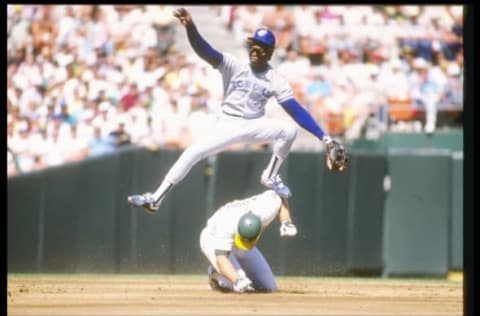
The Return of #1
1. Tony Fernandez for Darrin Jackson
The late great Tony Fernandez has had such a legendary career in Toronto it is hard to think they acquired him to gear up for the playoffs. That was the case in 1993, while this might not go down as a deadline deal, it was a deal that helped the Blue Jays into the playoffs.
The Blue Jays were rotating players throughout the season at shortstop, Dick Schofield was batting just .211 in early May when he went down for four months with an injury, Luis Sojo was failing at the plate batting just .179 and Alfredo Griffin was doing admirably but was on his final legs and wouldn’t be able to play full time. The Blue Jays were stacked and needed to shore up the shortstop position so he re-acquired Fernandez from the New York Mets for Darrin Jackson in the middle of June.
At the time of the trade, Fernandez was struggling with just eight extra-base hits and batting .225 through 48 games while having one of his slowest starts on defense with a .975 fielding percentage. When he returned to Toronto it was like resurgence on his career. After his first three games with the Blue Jays, he lifted his batting average 21 points going 7 for 14 with three doubles, one triple, one home run, and 7 RBI. He finished the season batting .306 for the Blue Jays with 31 extra-base hits in 94 games and also included 15 stolen bases.
In the ALCS against the Chicago White Sox, Fernandez played all six games at shortstop, batted seventh in the line-up and went 7 for 22 (.318). In the World Series that year against the Philadelphia Phillies he led all players with 9 RBI while hitting 7 for 21 (.333) along with three walks. It was likely that Fernandez was second in line for the World Series MVP after Paul Molitor.
The World Series win in Toronto meant a lot for fans to see Fernandez as he had been such a big part of baseball in Toronto. Fernandez would depart that offseason after his second stint with the Blue Jays but would make two more returns before his career finished.
Next. Looking Back at Ed Sprague. dark
Who is your choice as the best pick up? Is there someone not on the list you would have liked to see on the list?